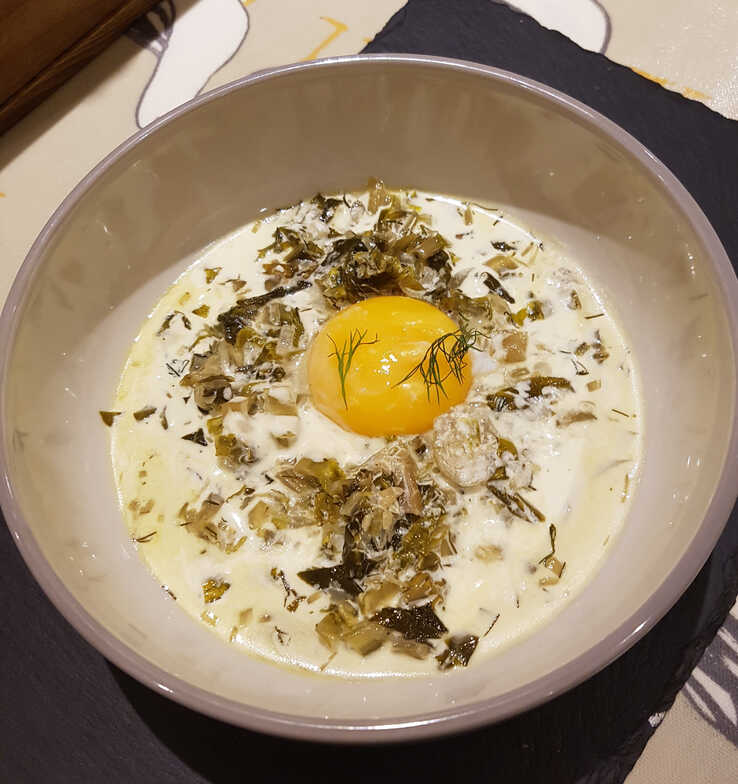
Salmoniakki with the Luters - Pluviôse 2025
My friends the Luters - the first to be experimented on experience the delight that is SALMONIAKꞰI.
I decided to re-create much of my practice meal only with cauliflower rice instead of real rice, since Cathy doesn't like rice.
Unfortunately it turns out that Cathy also doesn't like liquorice. Or horseradish. Or Soup. Or cauliflower rice.
On the plus side, she did really like the SALMONIAKꞰI - even eating extras.
So Hurrah - the dinner plan worked!
Now here is your cooking schedule (see whiteboard for details):
I discovered that you can effectively reheat a frozen loaf of bread by putting it straight from the freezer into the oven at Gas Mark 3/165°c/325°F for 20-30 minutes.
I decided to re-create much of my practice meal only with cauliflower rice instead of real rice, since Cathy doesn't like rice.
Unfortunately it turns out that Cathy also doesn't like liquorice. Or horseradish. Or Soup. Or cauliflower rice.
On the plus side, she did really like the SALMONIAKꞰI - even eating extras.
So Hurrah - the dinner plan worked!
Now here is your cooking schedule (see whiteboard for details):
- Prepare Ahead:
- Make the rillettes. If you want to use confit duck legs , you'll have to start a week ago.
- Make the horseradish cream any time really - it keeps for a while, and needs time to infuse.
- Prepare the lettuce soup, beetroot purée, SALMONIAKꞰI sauce, and the orange possets up to a day ahead. Careful with the soup Eugene!
- To Serve:
- Bake the bread
- Warm the soup. Carefully!
- Fry the fish. Bake the cauliflower rice. Garnish. Beautifully 🙂
I discovered that you can effectively reheat a frozen loaf of bread by putting it straight from the freezer into the oven at Gas Mark 3/165°c/325°F for 20-30 minutes.
menu
Entrée
Duck Rillettes
Soup
Lettuce Soup
Main
Salmoniakki!
Japanese Cucumber Salad
Horseradish Cream
Dessert
Orange Posset
Duck Rillettes
Served with a loaf of rustic bread from my Introduction to Pâtisserie cooking class.
Soup
Lettuce Soup
An interesting soup which shows promise. More of a summer dish perhaps.
Main
Salmoniakki!
Japanese Cucumber Salad
Tried and tested.
Lemon Cauliflower RiceHorseradish Cream
A bit sloppier than I had hoped for if I'm honest. Should have used some of those leftover horseradish pearls eh?
Dessert
Orange Posset
Easy and unctuous. That's my kind of dessert!
Lettuce Soup
veg soup
An interesting looking recipe from Anna Tobias - a resident chef at P.Franco's wine bar in Hackney, London.
Serves 4
Ingredients
- 350g of lettuce
- 2 shallots, or 5 spring onions
- 30g of butter
- 1/2 bunch of dill Now is this an imperial or a U.S. bunch? 😂
- 1 tbsp of flour maybe a little more?
- 750ml of chicken stock, or vegetable stock less is more, or, actually just better
- 35ml of double cream or more
- 1 tbsp of lemon juice
- salt & pepper
Shred the lettuce into neat slices, about the thickness of tagliatelle. Wash well and drain.
Melt the butter in a saucepan and add the shallots (or spring onions) and sweat gently without colouring for 5 minutes.
Chop the stalks and half of the dill fronds very finely, then add to the shallots. Season with salt and pepper and cook for a further 10 minutes with the lid on.
Add the lettuce and stir well to coat with the butter. Cook for a few minutes so it begins to wilt and release some of its liquid. Add the flour and cook for a further 2–3 minutes.
Melt the butter in a saucepan and add the shallots (or spring onions) and sweat gently without colouring for 5 minutes.
Chop the stalks and half of the dill fronds very finely, then add to the shallots. Season with salt and pepper and cook for a further 10 minutes with the lid on.
Add the lettuce and stir well to coat with the butter. Cook for a few minutes so it begins to wilt and release some of its liquid. Add the flour and cook for a further 2–3 minutes.
Or it might be easier to cook the flour in the buttery shallots before adding the lettuce.
Add the stock, stirring vigorously, until the lettuce is barely covered and simmer gently for 10 minutes.
Do this off the heat to prevent any inclination to curdling.
You may prefer more cream than advertised.
Anna says: You may prefer more cream than advertised.
I rather enjoy eating the soup just like this because I like the slurpy, sloppy nature of the cooked lettuce.
If you find this texture a bit challenging, then by all means do liquidise the soup so that you have a silky-smooth texture. The result will be a lovely pale green speckled soup.
To which I cannot yet personally attest.
It's not bad. I made a batch as far as adding the stock, in order to leave it overnight before re-warming and finishing with the cream and lemon, but it was a bit sad and limp.
It might have been better to prepare the shallot stock and adding the shredded lettuce closer to serving.
It might have been better to prepare the shallot stock and adding the shredded lettuce closer to serving.
I'm wondering if this soup would not be well served with some sort of confit or cured egg yolk floating in the centre?
Something to work on...
Something to work on...
Yes. It does!
Orange Posset
dessert veg fruit
Though I amalgamated a few different recipes here, I mostly followed Annika, but reduced the amount of cream.
You could use up to 600ml if you preferred.
You'll need to use about 2 decent-sized naval oranges, not satsumas, for this.
You could use up to 600ml if you preferred.
You'll need to use about 2 decent-sized naval oranges, not satsumas, for this.
Serves 4
Ingredients
- 400ml double cream
- ¼ cup sugar
- ¼ cup orange juice
- 1 tblsp orange zest plus zest of one extra orange
Cut 2 oranges in half. Run a knife around the inside of the skin on each cut face to loosen the segments.
Gently juice the halves with a lemon squeezer avoiding tearing or damaging the skin, then prise the orange centres away from the skin with a spoon and a paring knife.
Set aside.
Bring the cream to a boil in a pot over medium heat. Reduce the heat, add the sugar and stir until it dissolves. Continue simmering for about 10 minutes until the cream reduces by about half and thickens.
Fill the 4 hollowed-out orange halves with the slightly cooled orange cream mixture. Put in the fridge for 3 hours or until set (overnight is best).
Decorate with a torched, trimmed orange segment and mint leaves to serve.
You should get ¼ cup of juice, otherwise juice extra oranges.
Clean the orange skins out with a spoon. Slice a little from the underside without cutting all the way through to make a little platform if they won't stand up straight on their own.Set aside.
Bring the cream to a boil in a pot over medium heat. Reduce the heat, add the sugar and stir until it dissolves. Continue simmering for about 10 minutes until the cream reduces by about half and thickens.
You can add an orange-worth of zest to the cream to infuse extra flavour. This will be strained out - the tablespoon of zest added after is more for appearance's sake
Whisk in the orange juice and strain the mixture into a jug. Whisk in the tablespoon of extra zest.Fill the 4 hollowed-out orange halves with the slightly cooled orange cream mixture. Put in the fridge for 3 hours or until set (overnight is best).
Decorate with a torched, trimmed orange segment and mint leaves to serve.
Really nice.
I realised too late that they might look nice served sprinkled with icing sugar, or at least on a plate sprinkled with icing sugar. Ah well, next time!
I realised too late that they might look nice served sprinkled with icing sugar, or at least on a plate sprinkled with icing sugar. Ah well, next time!
Confit Egg Yolk
ingredient
Well, a kind of confit egg anyway - just warmed through egg really.
Ingredients
- eggs
Mix about half boiling water and half cold in a pan to bring to about 65°C.
Separate the egg yolks and discard their whites.
Either using your hands, or decanting them between the egg shells or maybe by just cracking them onto a slotted spoon.
Lower the yolks into the water with a slotted spoon, and either keep the heat super-low so the water doesn't heat up, or put the lid on, turn off the heat and leave the pot alone.
Leave the yolks in the water for at least 5 minutes so they're warmed through.
Separate the egg yolks and discard their whites.
Either using your hands, or decanting them between the egg shells or maybe by just cracking them onto a slotted spoon.
Lower the yolks into the water with a slotted spoon, and either keep the heat super-low so the water doesn't heat up, or put the lid on, turn off the heat and leave the pot alone.
Leave the yolks in the water for at least 5 minutes so they're warmed through.
It's easiest if you can just leave them on the spoon in the water.
Lift out with the slotted spoon, pat gently dry and use them as you see fit.
It works - though the yolks are incredibly delicate and break easily, so expect mess.

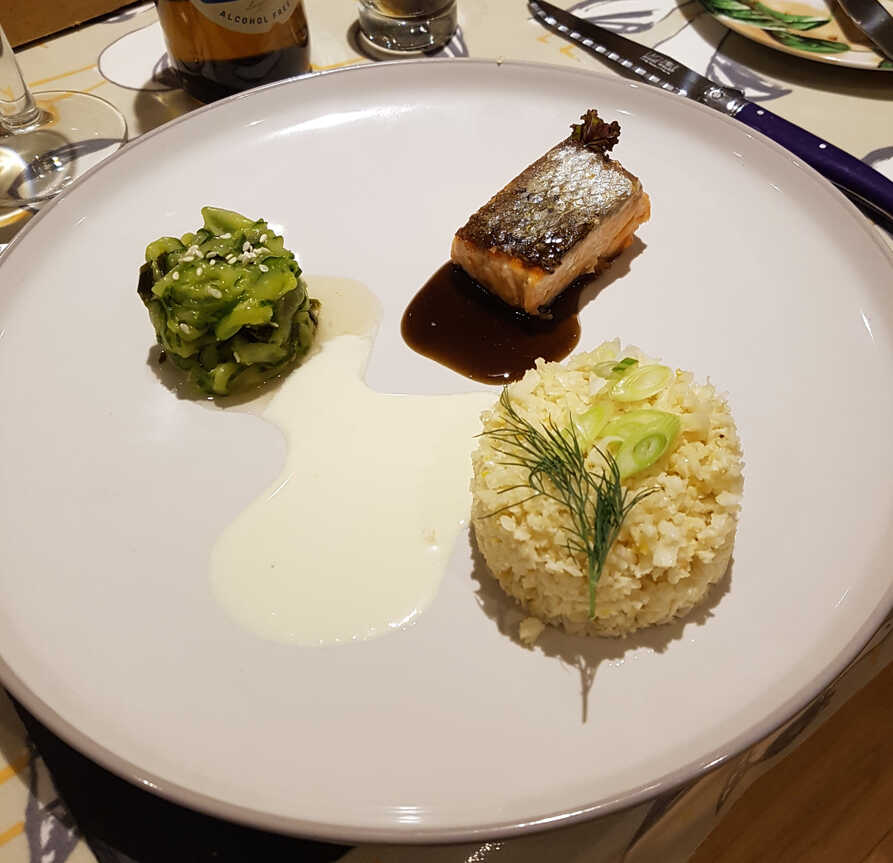
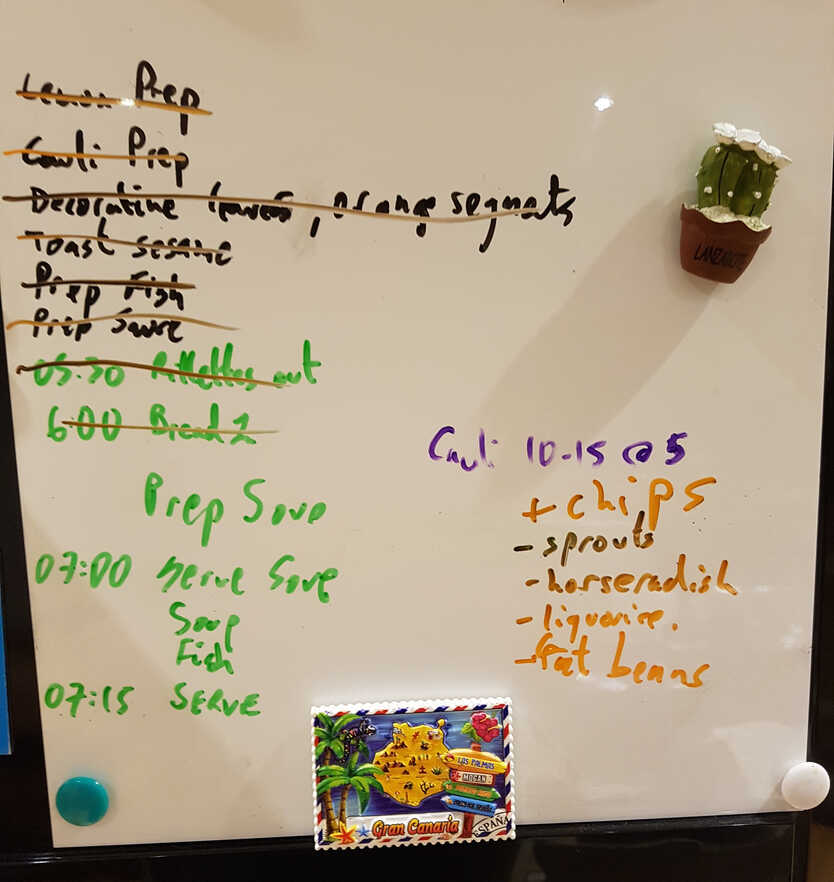
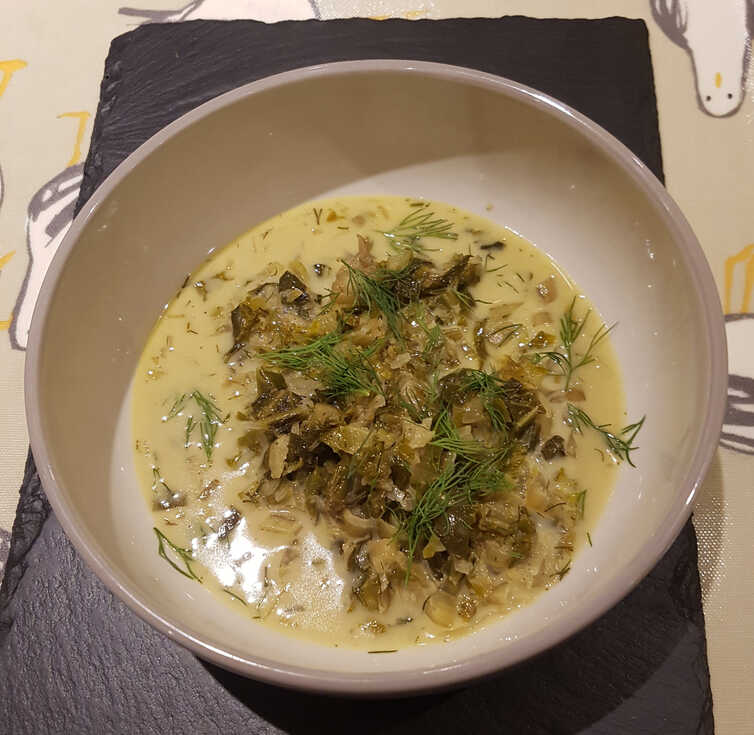
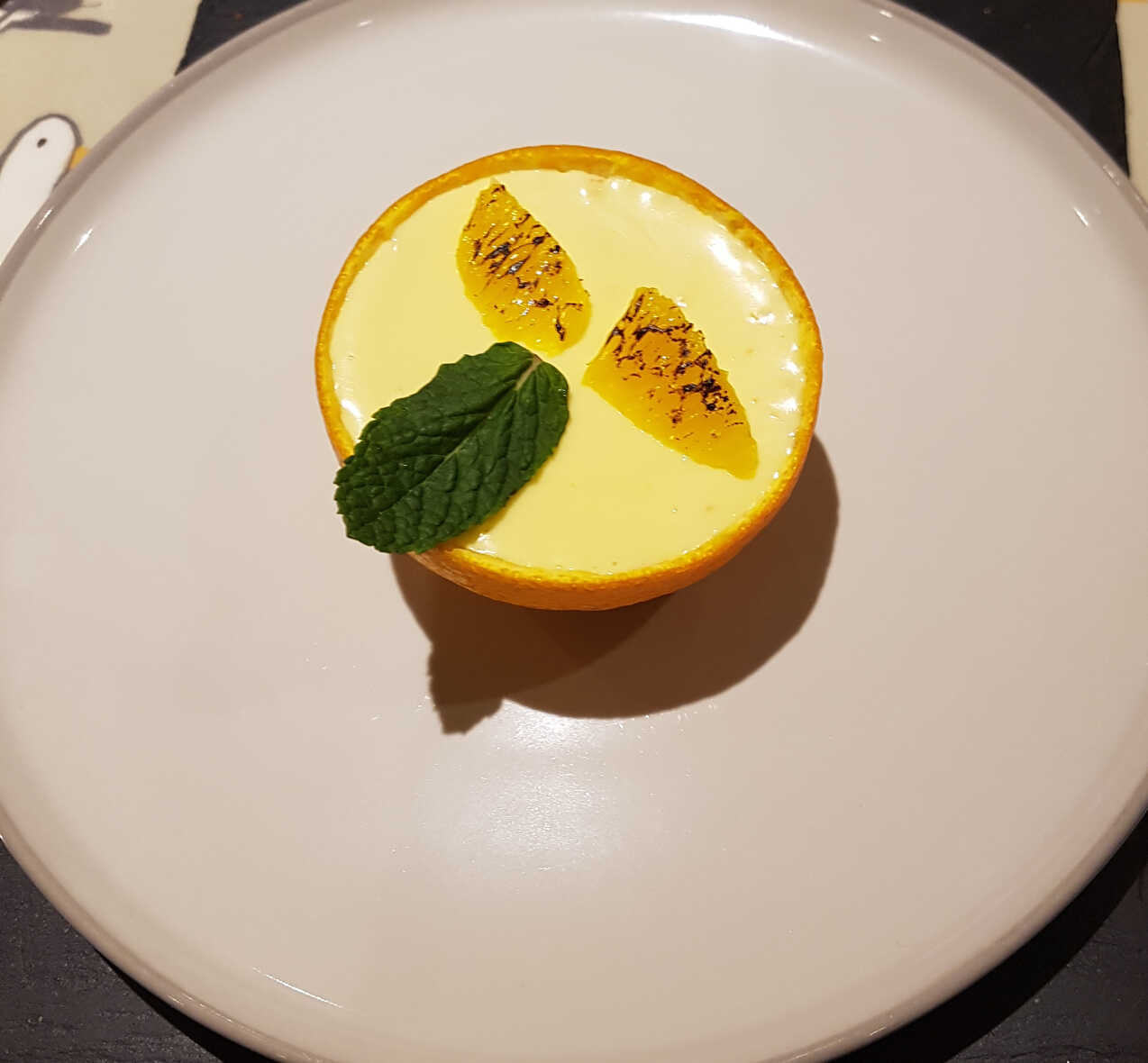
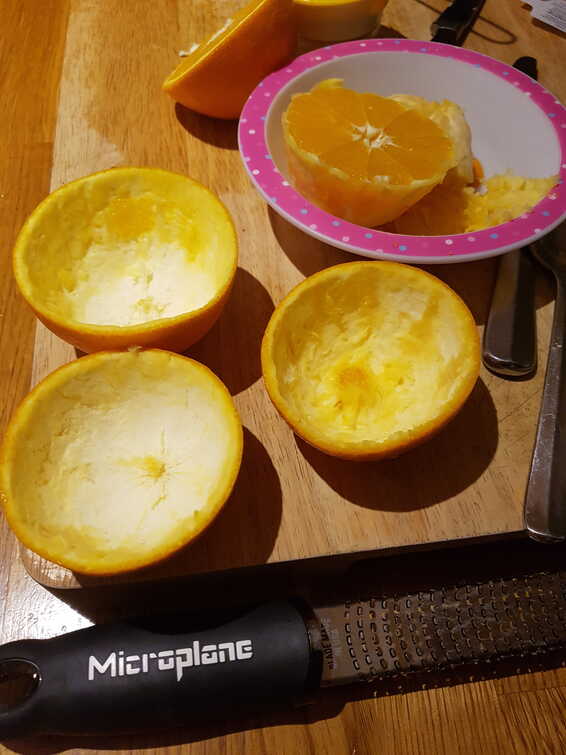
Also - 750ml is rather a lot of stock. I'd start with 500-600ml and see how it looks.